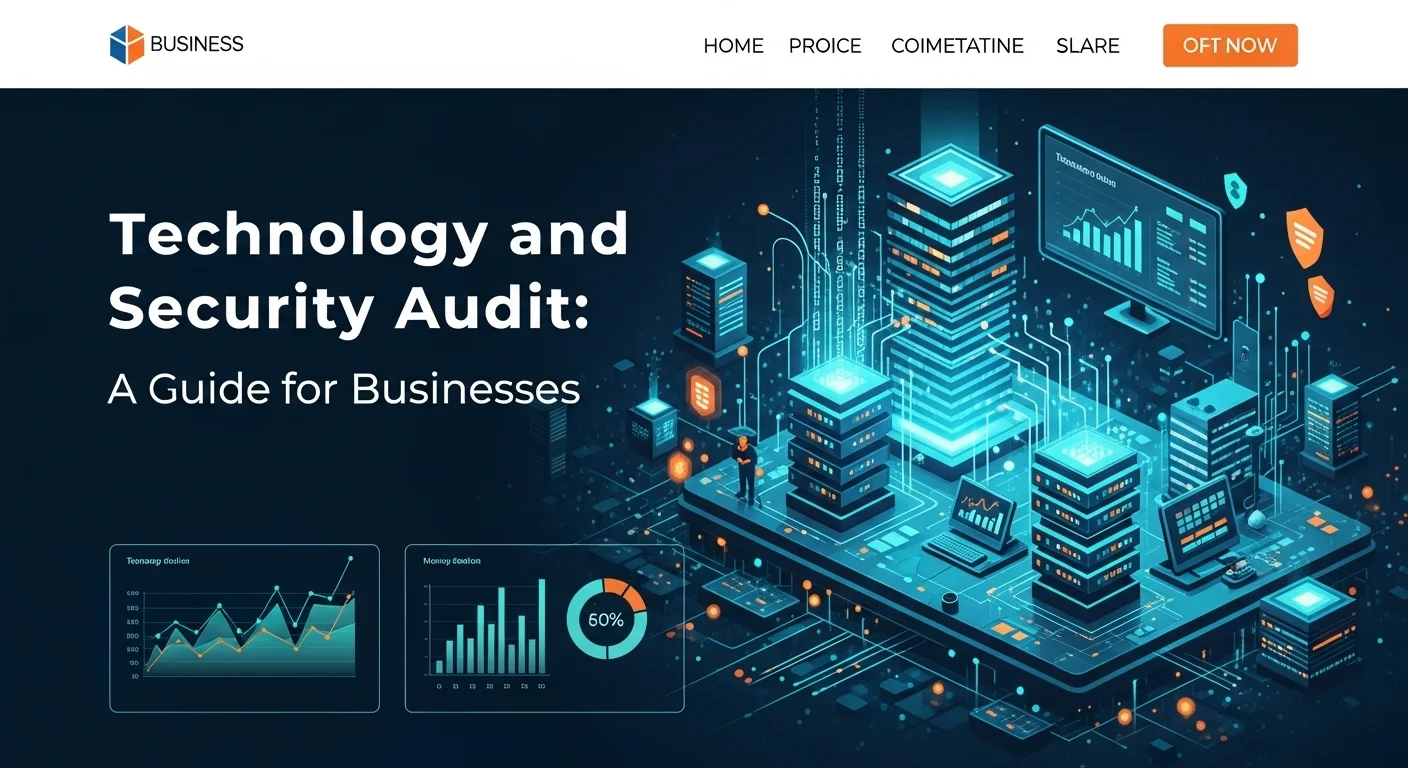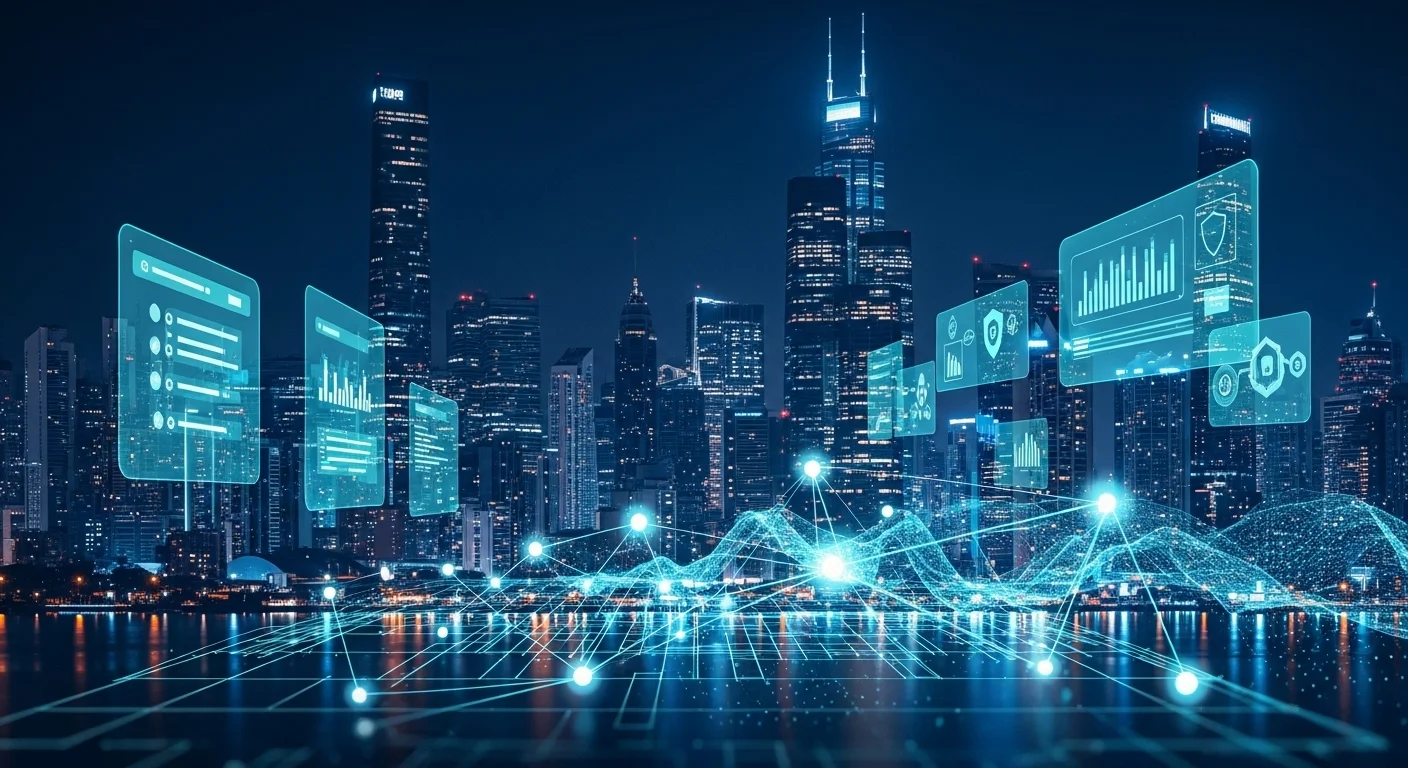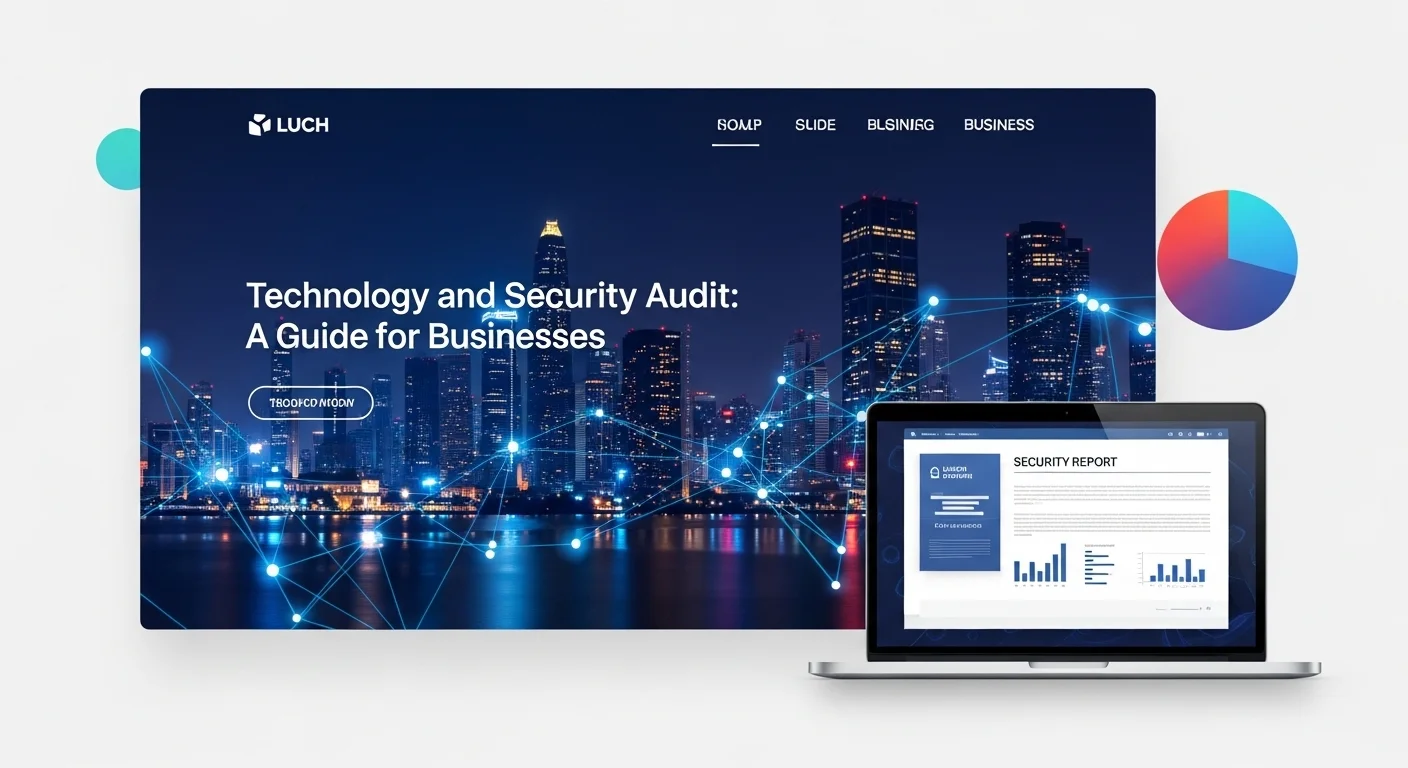The Plain-English Guide to Security Audits for Your Business

Executive Summary
In a world that runs on data, protecting your business's digital home isn't just a good idea—it's essential for survival. I've spent years in the trenches of cybersecurity, and I've seen firsthand how a simple security audit can be the one thing that stands between a company and a devastating breach. This guide is my way of cutting through the jargon. We'll explore what a security audit really is, breaking down complex topics like network and computer security checks into simple, actionable steps. We'll look at how these audits protect you, help you meet legal requirements, and build unshakable trust with your customers. Think of this as your personal roadmap to building a more secure, resilient business. Let's get started.
Table of Contents
Table of Contents
- What is a Security Audit and Why Does It Matter?
- The Real-World Benefits for Your Business
- Audit vs. Assessment vs. Pen Test: What's the Difference?
What is a Security Audit and Why Does It Matter?
In my line of work, I often compare a security audit to a thorough annual check-up with a doctor. You might feel fine, but it’s the only way to find potential issues before they become serious problems. A Security Audit is exactly that for your technology: a deep, organized review of your company's digital defenses. It’s a systematic check to see how well your security measures—your policies, controls, and infrastructure—stack up against established standards and best practices. The main goal is to find weaknesses, ensure you're compliant with regulations like GDPR or HIPAA, and give you a clear, prioritized list of things to fix. This isn't about pointing fingers; it's a proactive strategy to protect your most valuable assets: your data, your reputation, and your customers' trust.
The importance of this can't be overstated. It’s the foundation of any solid cybersecurity plan. A good audit helps you manage risk by showing you exactly where you're most vulnerable. Are you more at risk from an employee clicking a phishing email or from a poorly configured firewall? An audit helps you answer that. It gives you a snapshot of your security health, highlighting the open doors and windows that hackers are constantly looking for. In my experience, preventing a breach is infinitely cheaper and less stressful than cleaning one up. Beyond prevention, a regular audit in information security is crucial for legal reasons. Many industries have strict data protection laws, and failing to comply can lead to massive fines and reputational ruin. An audit report is your proof of due diligence.
One thing that often confuses people is the difference between a security audit, a vulnerability assessment, and a penetration test. Let me break it down simply. An audit checks if you're following the rules (like a compliance checklist). A vulnerability assessment scans for potential weaknesses (like checking for unlocked doors). A penetration test actively tries to break in to see if those weaknesses can be exploited (like a simulated burglary). All three are important, but the information security and audit process is what ties everything together, providing governance and verifying that your security program as a whole is working as it should.
The Real-World Benefits for Your Business
So, what does this mean for your business in practical terms? Let's start with a network security audit. Think of your network as the nervous system of your company. This audit examines your firewalls, routers, and switches to ensure they're configured correctly. I once worked with a client whose firewall rules were so outdated that a simple scan from the outside would have revealed a direct path to their customer database. A network audit caught this, closing a massive security hole before it was ever found by the bad guys.
Then there's the computer security audit, which looks at individual devices like servers and employee laptops. These are often the easiest way for an attacker to get in. This audit checks for things like up-to-date antivirus software, strong password policies, and proper access controls. Are employees using 'Password123'? Are old employee accounts still active? A computer security audit uncovers these everyday risks and helps you lock down the devices that access your sensitive data, dramatically reducing your attack surface.
The benefits go far beyond just plugging holes. A clean bill of health from an audit is a powerful signal to customers and partners that you take their security seriously. It builds trust. It can even save you a lot of money. The cost of a data breach is staggering, not just in fines but in lost business and recovery efforts. Investing in proactive audits is a fraction of that cost. Many businesses find that engaging professional IT security audit services is the best path forward. An external expert brings an unbiased, fresh pair of eyes and specialized knowledge that an internal team might miss. They don't just find problems; they provide a clear roadmap for improvement, helping you build a stronger, more secure organization for the long haul.

Your Step-by-Step Guide to a Security Audit
A truly effective security audit isn't a simple checklist; it's a carefully planned project tailored to your unique business and technology landscape. It requires a mix of proven methods, the right frameworks, and a clear understanding of the process from start to finish. I've guided countless companies through this journey, and it always begins with laying the right groundwork. Let’s walk through how to build a complete security audit plan that evaluates your defenses and strengthens your business.
Choosing the Right Approach: Frameworks and Audit Types
Before you dive in, you need a map. In the audit world, these maps are called frameworks. Think of them as established recipes for security. Frameworks like the NIST Cybersecurity Framework, ISO 27001, or the CIS Controls provide a structured path and a common language for assessing your security. For example, NIST is fantastic for its flexibility and focus on five key functions: Identify, Protect, Detect, Respond, and Recover. ISO 27001 is more of a global gold standard, ideal if you need to prove your security management to international partners. Choosing the right one depends on your industry and goals, but benchmarking your audit in information security against a recognized standard is always a smart move.
Audits generally come in two flavors: internal and external. Internal audits are performed by your own team. They're great for regular health checks and making sure everyone is following company policy. However, it's easy to develop blind spots. That’s where external audits come in. Performed by an independent third party, they provide the unbiased, expert assessment you need for true peace of mind and often for regulatory compliance. When I perform an audit, I bring an outsider's perspective, which is invaluable for spotting issues the internal team might be too close to see. This is why many businesses rely on professional IT security audit services. Audits can also be manual (a person reviewing policies), automated (a tool scanning for vulnerabilities), or, most commonly, a hybrid of both.
The Nitty-Gritty: Technical Methods and the Audit Process
The actual audit process unfolds in a few clear stages. I always tell my clients that preparation is half the battle.
1. Planning and Scoping: This is where we sit down together and define what we're testing and why. Are we looking at the entire company, or just a new cloud application? What compliance standard are we measuring against? Getting the scope right from the start is crucial for a successful audit.
2. Information Gathering: Next, my team and I gather all the relevant documents—network diagrams, security policies, past reports—and interview key staff. This gives us the context we need to understand how things are *supposed* to work before we test how they *actually* work.
3. Technical Testing and Analysis: This is the hands-on phase where the real discovery happens. It often includes several mini-audits:
- Network Security Audit: Here, we're like digital detectives mapping out your network. We use tools like Nmap to see what ports are open and Wireshark to analyze traffic patterns. We review firewall rules line by line. The goal of a network security audit is to find any cracks in your digital perimeter.
- Computer Security Audit: We then zoom in on individual computers and servers. We check if security patches are up-to-date, review user permissions to ensure no one has more access than they need (a huge security principle), and scan for any signs of malware. A solid computer security audit is essential because endpoints are a favorite target for attackers.
- Application and Cloud Audits: We also test your applications for common flaws like SQL injection and review your cloud setups. In the cloud, it's incredibly easy to misconfigure something, so we check your access policies, data encryption, and monitoring tools to make sure your cloud environment is secure.
4. Reporting: After the testing, we compile everything into a clear, easy-to-understand report. I make sure my reports aren't just a list of problems. They explain the risk of each finding (critical, high, medium, low) and provide practical, actionable recommendations to fix them. This report becomes your roadmap.
5. Remediation and Follow-up: An audit is useless if you don't act on the findings. The final step is for your team to fix the identified issues. Often, we'll come back for a follow-up check to verify that the fixes are in place and working correctly. This closes the loop and ensures real security improvement.
Understanding how these different audits connect is key. A vulnerability on one laptop could compromise the entire network. That's why a holistic information security and audit strategy, often guided by experienced IT security audit services, is the most effective way to protect your business from top to bottom.

Pro Tips for a Successful Security Audit
Over the years, I've learned that a successful security audit is as much about mindset and strategy as it is about technology. It’s about building a culture of security. Whether you're a business leader or a tech professional, these are my go-to tips for transforming your security audit from a simple compliance task into a powerful tool for building resilience.
Best Practices for Effective Security Auditing
To get the most value out of your audit, follow these tried-and-true best practices:
- Don't 'Set It and Forget It': Make Audits a Habit. The digital world changes in the blink of an eye. A one-off audit is just a snapshot in time. To stay secure, you need to conduct audits regularly—at least once a year, or after any major change to your systems. This creates a cycle of continuous improvement that is the hallmark of a mature security program.
- Focus on What Matters Most with a Risk-Based Approach. You can't protect everything equally. A risk-based approach helps you focus your energy and budget on your most critical assets. I always ask my clients: 'What system, if it went down, would cause the most damage to your business?' That's where we start. This is the core principle of an effective audit in information security.
- Make Security a Team Sport. An audit shouldn't happen in an IT silo. Involve people from across the business—legal, HR, operations. Their perspectives are invaluable for understanding the real-world impact of security policies and ensuring the solutions we propose are practical for everyone.
- Document Everything. I can't stress this enough. Keep detailed records of your audit plan, your findings, and what you did to fix them. This paper trail is not only essential for future audits but also serves as proof to regulators that you are taking security seriously.
- Build Security In, Don't Bolt It On (DevSecOps). If you develop your own software, the most efficient way to stay secure is to build it in from the start. By integrating automated security checks into your development process, you catch vulnerabilities early when they are cheapest and easiest to fix. This is what a modern information security and audit strategy looks like.
The Auditor's Toolkit: Essential Tools and Resources
Having the right tools makes a world of difference. They automate the grunt work and give us the deep visibility needed to find hidden risks. Here are some of the essentials in my toolkit:
- Vulnerability Scanners: These are the workhorses of any audit. Tools like Tenable Nessus or Qualys are brilliant for scanning your entire network for known vulnerabilities, like out-of-date software or weak configurations. They are a must-have for any network security audit or computer security audit.
- Network Analysis Tools: For a deep dive into your network, nothing beats tools like Nmap and Wireshark. I use Nmap to map out the network and see what's running, and Wireshark to capture and analyze traffic, looking for anything suspicious.
- SIEM (Security Information and Event Management) Systems: Think of a SIEM like a central nervous system for your security data. Tools like Splunk or the Elastic Stack collect logs from all your devices and help you spot patterns that might indicate an attack. During an audit, they are fantastic for reviewing historical events.
- Compliance Management Platforms: If you're chasing a specific certification like ISO 27001 or SOC 2, platforms like Drata or Vanta can be lifesavers. They automate a lot of the evidence collection, making compliance audits much smoother.
- Specialized Audit Services: For most small to medium-sized businesses, the smartest move is to partner with a firm that provides professional IT security audit services. We bring the advanced tools, years of experience, and an objective viewpoint that's nearly impossible to replicate in-house. It’s the fastest way to get a comprehensive assessment and an actionable plan.
What's Next? The Future of Auditing with AI
The world of security auditing is getting smarter. The future is all about automation and intelligence, powered by Artificial Intelligence (AI) and Machine Learning (ML). I'm already seeing AI-powered tools that can analyze massive amounts of data to spot subtle threats that a human might miss. This is shifting us away from periodic audits towards a model of 'continuous assurance,' where your security is monitored and validated in real time. As our technology gets more complex with IoT and cloud-native systems, a security audit will only become more crucial. Embracing these new intelligent tools will be the key to staying one step ahead of the attackers.
Expert Reviews & Testimonials
Sarah Johnson, Business Owner ⭐⭐⭐
This was a solid overview of security audits. As a business owner, I would have loved a few more real-world case studies to bring it to life, but it was very helpful!
Mike Chen, IT Consultant ⭐⭐⭐⭐
Great article on security audits. It really clarified the process for me. A few of the technical concepts were still a bit dense, but overall it was extremely useful for my work.
Emma Davis, Tech Expert ⭐⭐⭐⭐⭐
An absolutely excellent and comprehensive guide to security audits. It connected all the dots for me and was perfectly explained. I've already bookmarked it for my team.



